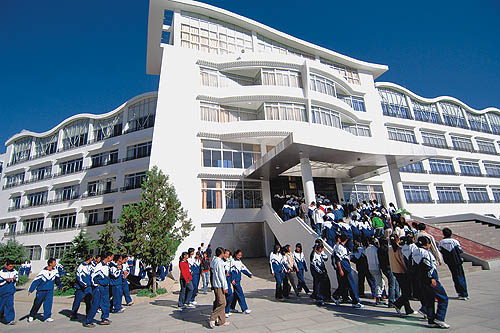| 
There wasn't even one formal school in the modern sense in all Tibet before liberation. The illiteracy rate reached 95 percent and the school enrollment rate only 2 percent. Through the efforts of more than 50 years, a comparatively integrated education system, including preschool education, elementary and secondary education, higher education, vocational education, special education and adult education, has been shaped.
In 2006, Tibet invested more than 2 billion Yuan in the development of the education undertaking, an increase of 3.35 percent. By the end of 2006, there were 890 elementary schools, 1,568 teaching centers, with a total student body of 329,500 and an attendance rate of 96.5 percent for children of school age, a rise of 0.6 percentage point over 2005; there were 93 junior middle schools, with 127,900 students and an attendance rate of 75.4 percent; 13 senior middle schools, with 37,700 students; and 10 secondary vocational schools, with a total student number of 14,775. Now, there are six higher schools such as Tibet Nationalities Institute, Tibet Agriculture and Animal Husbandry College, Tibet University and Tibet Institute of Tibetan Medicines, with 23,327 students. Over 20,000 students have graduated from universities and more than 23,000 students from technical secondary schools, including a number of Tibetan doctors and masters. In addition, there are also large numbers of professional talents such as Tibetan scientists, engineers, professors, famous doctors, writers and artists. |
